A thin or barren lawn is a significant source of frustration, and homeowners and lawn owners everywhere dream of a thick, well-manicured, beautiful green yard. There’s nothing better than relaxing on grass thicker and fuller in the sun. Also, a beautiful yard is an inexpensive way to add that much-needed “curb appeal and increase the value of your home.
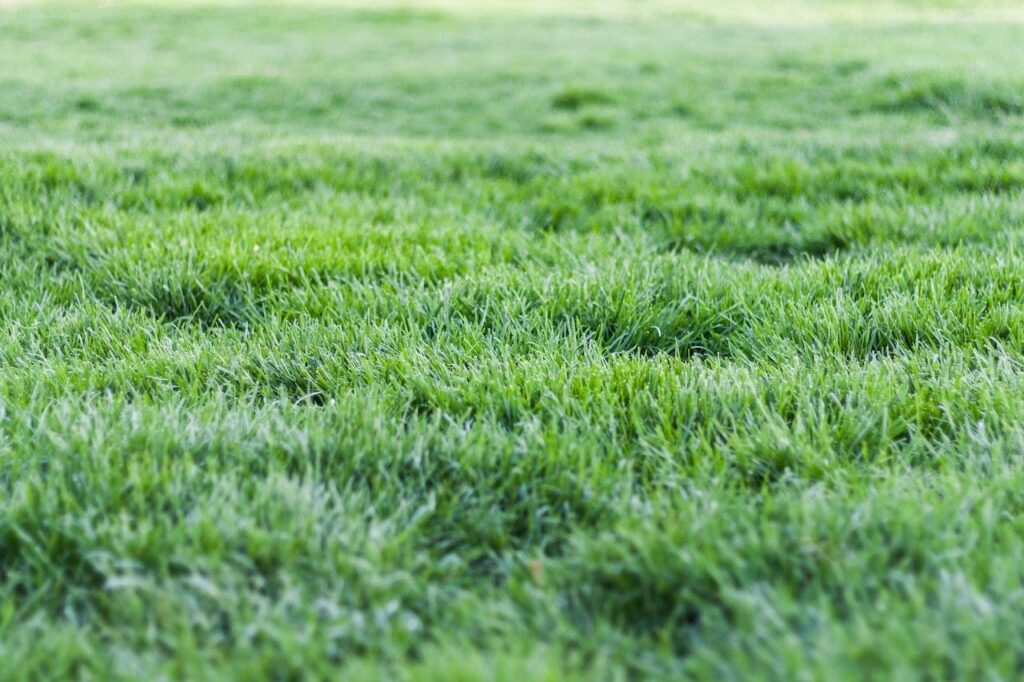
An excellent way to get a thick carpet-like lawn is to overseed or plant grass plugs in the bare spots.
Transforming lackluster and thin grass into a thicker, fuller, healthier lawn is easy if you know what to do. It usually involves overseeding the bare parts of the yard, getting rid of the nasty weeds, aerating and dethatching the grass on time, and following a proper mowing, watering, and fertilizing schedule.
However, there is no one-size-fits-all method to make your lawn thicker and fuller.
Every yard is different and has varying problems and needs. But luckily, most lawn problems are easy to identify. Nevertheless, as beginners in lawn care, there are a few steps you can take to ensure it stays in shape, maintains its color, and grows thick.
What are these steps? Please continue reading to find out.
Getting Started On Making The Grass Thicker
As the old goes, “the first step in solving a problem is admitting there is one.”
So, the first and most important thing when working on making your lawn greener, fuller, and thicker is to identify the problem that is causing the grass to thin out. And fortunately, most of these problems are easily identifiable and, even better, easily fixable.
However, before we discuss these specific lawn issues that cause thinning of the grass, let’s discuss some general things you can do to improve the shape of your grass.
1. Improve The Soil
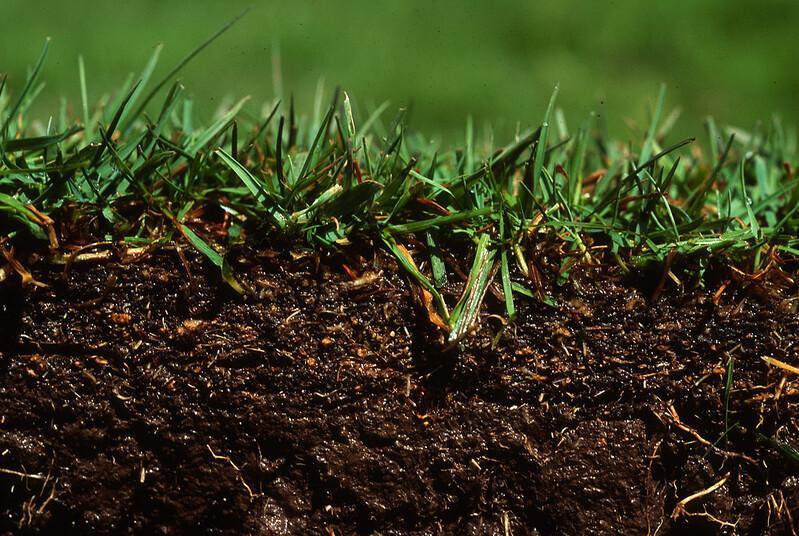
The best way to improve your soil is by adding anything organic such as manure and compost.
To create a healthy turf, you must ensure healthy soil beneath it. It is often a thing that is missing from many articles online directed at improving the health of lawns. The ability of soil to support healthy grass growth varies from place to place and needs to be assessed before any soil amendments, such as fertilizers, gypsum, and lime, are applied.
The assessment of lawn soil, or in other words, a soil test, is essential for several reasons. It can help you improve nutritional deficiencies in the ground, identify grass culture problems you might face, protect the surroundings from contamination by nutrient run-off due to excessive fertilizer use, and optimize grass growth.
Where To Get A Soil Test For Your Lawn?
Many soil testing kits are available in gardening stores and online marketplaces to purchase and test your lawn soil. However, I highly recommend that you get your soil tested by the local extension office or a reputed soil testing lab, as they offer more in-depth reports.
Furthermore, a good soil test can save you a lot of money by saving you from buying things you do not need. All you need to do is collect some soil samples from different spots in your lawn, mix them, and then send the soil sample to the testing facility.
I usually use this MySoil – Soil Test Kit from Amazon to test my lawn soil every spring. Once you send the soil, the results become available online within a week. And they also provide precise fertilizer recommendations to improve the productivity of their soil.
Don’t Rely Too Heavily On Synthetic Amendments.
However, I recommend that you do not rely too heavily on synthetic fertilizers to improve the soil of your lawn. Although there is a place for them, if used excessively, you will get stuck in an expensive cycle of lawn care that is not sustainable.
I typically use organic products such as compost in my lawn from time to time to improve the yard soil and keep the grass healthy. It saves a ton in fertilizer costs and is all organic, which is good for the environment and simultaneously eliminates kitchen waste.
RELATED: Lawn Fertilizer Schedule | When To Fertilize Your Grass For The Best Results?
2. Adjust The Soil pH For Your Grass
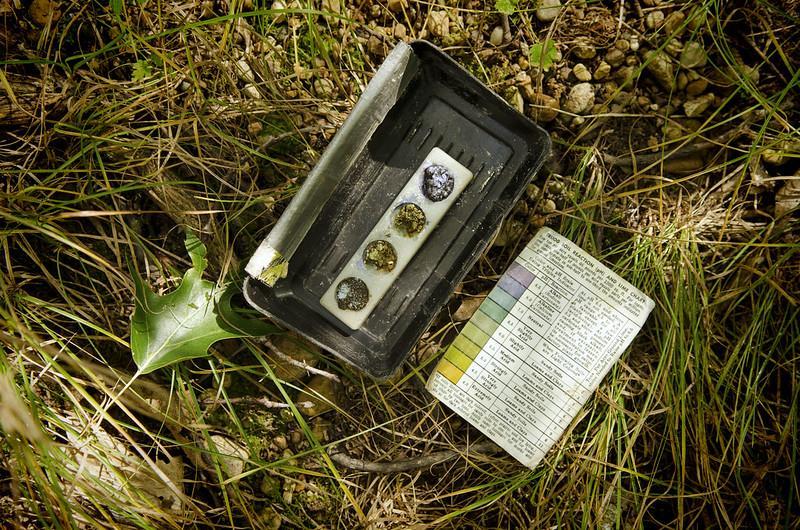
The best pH range is between 6 and 7 – anything lower or higher may result in unhealthy turf.
“You are what you eat” applies to the grass too, and since the grass’s food is the nutrients in the soil, the quality of the yard’s soil is a significant contributor to the overall health of your turf. However, sometimes when you get a soil test, everything seems to be okay. There are plenty of nutrients, air, and moisture in the soil, then why is your lawn thin?
The problem soon becomes evident when you look at the pH levels of your lawn soil. Soil pH is one of the most significant factors that affect the availability of nutrients to the grass. And a soil’s pH level is a direct measure of its acidity or alkalinity.
pH ranges from 1 (most acidic) to 14 (most alkaline) with a neutral pH of 7, and most turfgrass types thrive in slightly acidic soils with a pH of about 6 to 7.
How To Determine The pH Of Lawn Soil?
If you have the results of a detailed soil test, such as the one from your local extension office, you can find pH levels for the soil somewhere in the report. And you do not have to get a soil pH test separately. However, soil pH tests can also be performed individually.
The best way to conduct a soil pH test is by purchasing a soil pH testing kit and doing it yourself at home. These tests are quick, reliable, and inexpensive.
I often use this Luster Leaf Rapitest Soil Test Kit from Amazon.
How To Adjust The pH Of Lawn Soil?
Once you have the results of a soil pH test, you will know if the soil is too acidic or too alkaline. Then depending on the pH, you can make relevant adjustments.
For example, let’s say that the test results suggest that the pH of your lawn soil is too acidic. In such an instance, you can sprinkle some lime on your lawn and bring the pH back to normal. Popular sources of lime are wood ashes or ground limestone.
However, if the soil pH test results suggest it is too alkaline, you will have to bring it down by using sulfur. However, sulfur can harm your grass in high amounts. So, I recommend using peat moss to lower the pH of your lawn soil.
Water The Soil & Test Again.
It would be best if you used these soil amendments to adjust the pH of your soil months before planting the grass. However you can also use them on established lawns, but they will not produce the same results. Nevertheless, once you add sulfur or lime to the soil, please ensure to water the grass so that these elements get absorbed into the ground.
Also, please keep testing the pH of your soil every year. Once adjusted, most home lawns often do not need pH adjustment for a few years, but it is still good to keep track and make slight changes to the lawn care as you move along.
3. Maintain A Proper Fertilization Schedule
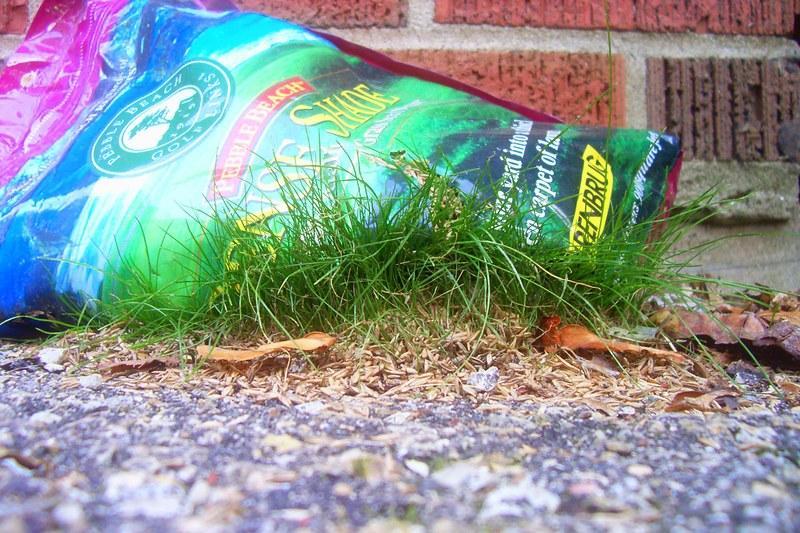
A lawn fertilization program considers what the grass is doing and what it needs.
Turf grasses that make up your lawn need quite a lot of feeding. Feeding the yard not only improves the health of a lawn’s root system and makes it immune to drought and lawn weeds but also makes the grass thicker, greener, and fuller. Unfortunately, most homeowners don’t bother with lawn fertilization or know what to use.
Lawn Fertilizers & The NPK Ratio
All grass types need three primary nutrients to grow and thrive: nitrogen (N), phosphorus (P), and potassium (K). You can see numbers like 5-10-10, 10-10-10, and 10-6-41 printed on fertilizer label bags. These are the NPK numbers. They show the fertilizer’s relevant nitrogen, phosphorus, and potassium concentrations.
Grass also needs other minerals and nutrients in much smaller amounts, i.e., micronutrients such as calcium and iron. Nitrogen, phosphorus, and potassium are, however, required in much larger concentrations, and they are known as macronutrients.
What Do Fertilizers Do For The Grass?
Macronutrients play a pivotal role in the development of grass, and their deficiency can cause the turf to thin out in places and lose its color. For example, nitrogen contributes to the overall wellness of your grass. It gives grass its vibrant color by encouraging the production of chlorophyll and helps the blades to grow straight and strong.
Phosphorus, on the other hand, is essential for root and early plant development. Whereas potassium gives the grass the strength it needs to fight drought, stress, and disease.
What Fertilizer Should I Use To Make The Grass Thicker?
The best fertilizer for your grass will depend on the conditions of your lawn and its soil.
For instance, if the soil test shows that lawn soil is deficient in nitrogen, you would benefit most from a high-nitrogen fertilizer. All in all, the soil test will decide the best fertilizer.
When To Fertilize Your Grass For Best Results?
When to fertilize depends on what kind of grass you have. However, you should generally fertilize your lawn at least twice a year. Most experts recommend applying lawn fertilizer once in the spring and then again during the active growing season of the grass.
Synthetic Vs. Organic Fertilizers
Unlike synthetic fertilizers, organic fertilizers are minimally processed and retain their “natural” form. However, they both have their pros and cons. For example,
| Quality | Synthetic | Organic |
| Environmental Safety | A significant amount of nutrients can be lost from run-off. | Minimal, if any, run-off or leaching. |
| Plant Safety | Incorrect or over-application may burn grass and cause excess top growth. | In most cases, it won’t burn the grass. |
| Speed Of Action | You may see results in 1 to 2 weeks. | Take a few weeks to produce results. |
| Ease of Application | They are simple and easy to apply. | It may take extra effort to distribute over large areas. |
| Purchasing Convenience | They are generally cost-effective. | They can be more expensive than synthetic fertilizers |
RELATED: How Cold Is Too Cold To Fertilize Your Lawn? A Comprehensive Guide
4. Aerate The Lawn Soil Regularly.
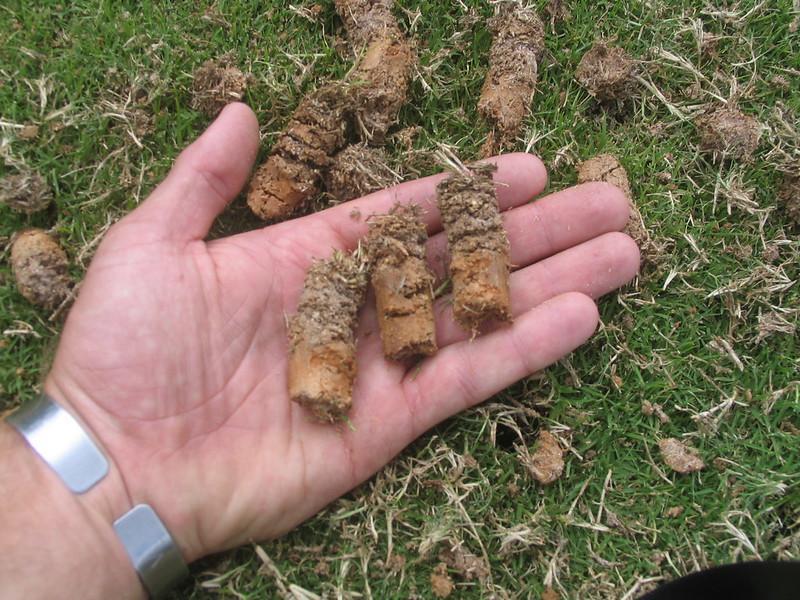
Photo Credit Aerating your lawn will relieve soil compaction and enhance grass growth.
Simple, regular maintenance tasks go a long way in creating a thicker, healthier lawn. And one of these simple maintenance tasks is soil aeration. As crucial as nutrients, water, and air are for the development of the grass, you need to ensure they reach the roots.
And soil aeration just does that while also improving the drainage problems of your yard.
Soil aeration involves creating holes in the ground. These holes allow air, water, and nutrients to penetrate the grassroots. In other words, it will enable the grassroots to get enough oxygen, water, and nutrients to grow, develop and thrive.
How To Perform Soil Aeration To Make Grass Thick?
You can use two primary methods to aerate your lawn: plug aeration, which removes cores of soil, and spike aeration, which pokes holes in the turf with tines. Both ways have advantages and disadvantages, but I prefer the plug-aeration method.
Spike aeration only solves the compaction issues in the short term by creating tiny holes in the ground. However, when punching holes, a spike aerator pushes the soil to the sides, which increases soil compaction in the long run. In contrast, in plug aeration, you remove soil plugs from the ground, which decompose on the surface, adding nutrients.
Thus, it relieves soil compaction and gives the lawn a nutrient boost simultaneously.
How Soil Aeration Makes The Grass Thick?
Soil aeration supplies oxygen, water, and nutrients to the grassroots, which is essential for healthy grass growth. Moreover, it makes the soil porous and soft, which in turn helps the grass roots grow deeply and produce a more robust, vigorous, and dense lawn.
5. Dethatch To Make The Grass Healthier
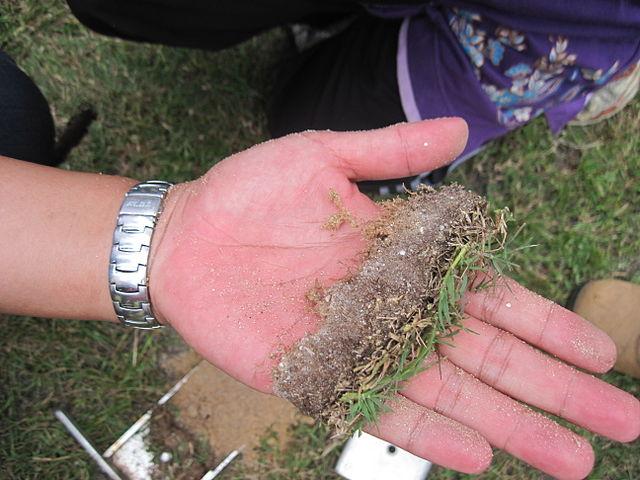
Dethatching removes dead matter that forms a spongy, thick layer at the base of your lawn.
Thatch is a layer of leaves, grass clippings, twigs, undigested roots, and other organic materials that sinks between the grass and the soil surface. Having a bit of thatch on your lawn is not bad. A thin layer of thatch is actually beneficial for the grass.
Thatch protects the soil and thus against significant fluctuations in soil temperatures and acts as an organic mulch to help conserve soil moisture. However, if the thatch becomes too thick, it can cause several problems for the grass. For instance, thick thatch blocks water and fertilizer, and grassroots get trapped in the thatch.
Furthermore, too much thatch increases the turf’s susceptibility to lawn disease.
How To Remove Thatch From Grass Lawns?
The first one and best for removing thatch is the solid thatch rake. You can also use leaf or hard rakes, but they may not work. Also, rakes remove thatch with the least damage to your grass, and it works great if the thatch on your lawn is less than one inch thick.
Simply rake your lawn with it, and the tines will dig in the thatch and pull it out, along with any dead matter from within the grass. However, if you have a large lawn or the thatch is too thick, you might need to use a dethatcher or power raker to break it out.
A dethatcher uses tines to comb and pull thatch up to the surface of the lawn. However, it is a powerful tool and a rough machine, and it may cause damage to the turf.
When To Dethatch For The Best Results?
Both warm-season and cold-season turf types should be dethatched when actively growing. Do not dethatch the grass when it is dormant or young. Dethatching is a stressful procedure, and it can cause significant and extensive damage if done at the wrong time.
RELATED: Solved! How Long Do Fertilizers Take To Work? | Liquid Vs. Granular Fertilizer
6. Overseed The Lawn To Fill Bare Spots
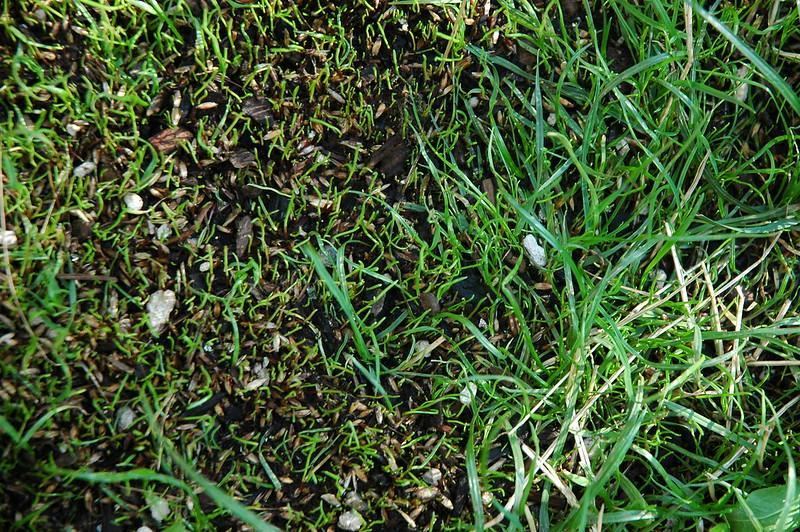
Overseeding is simply sowing grass seed into existing grass to make thin lawns thick.
If you’ve never heard of overseeding, today is your lucky day. Overseeding is an inexpensive method that doesn’t take much time or effort. It involves planting grass seed, plugs, or sod directly into existing turf without raking or tearing up the turf or soil.
Once the seeds, sod, or plugs have been planted, they will start to fill in the bare spots, and you will again have a thick backyard that will be the envy of the entire neighborhood.
Here is a brief step-by-step guide for overseeding your grass for the best results:
- Mow your lawn as short as possible without scalping the lawn.
- Choose a grass seed and ensure it goes with your yard and region.
- If needed, amend the soil and add fertilizer or lawn starter food.
- Next, spread the seed evenly over the area that needs to be reseeded.
- Keep the soil moist for the next few days. And you are good to go.
When To Overseed The Lawn For Best Results?
Late summer or early fall is the best time to overseed lawns. However, the best time to overseed your lawn will vary based on the grass you are going to overseed your turf with and the area of your residence. Done right; it’s a straightforward process that gets results.
7. Control Weeds
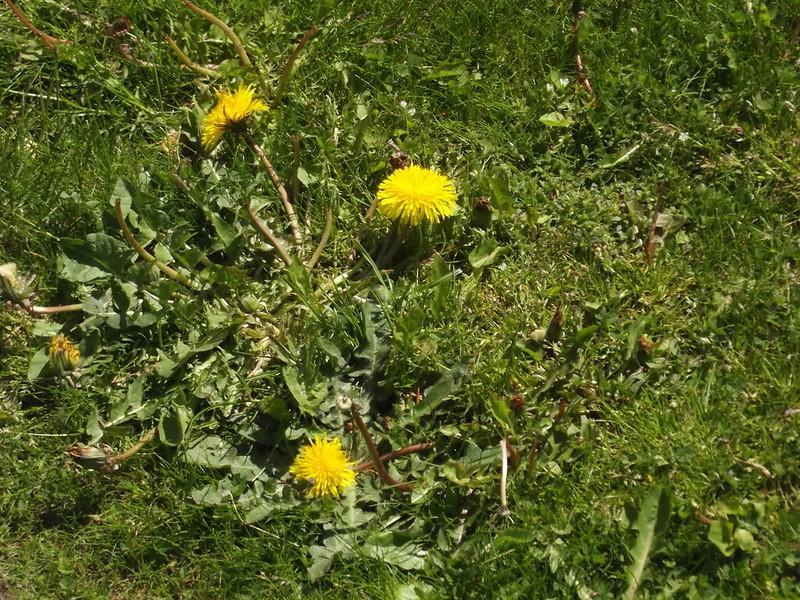
Weeds compete with grass for space, nutrients, and water.
Sometimes, your grass might thin out in places, not because of a nutrient deficiency or pH problem but pesky lawn weeds. Lawn weeds are an eyesore for turf enthusiasts. However, they also rob the lawn grass of its space, water, and essential nutrients.
As a result, the growth and development of the grass might suffer, and the turf might start to thin out in places and lose its vigor. So, if you want to ensure that your lawn stays thick and full, keeping weeds away is another thing you need to add to your bucket.
8. Water Adequately
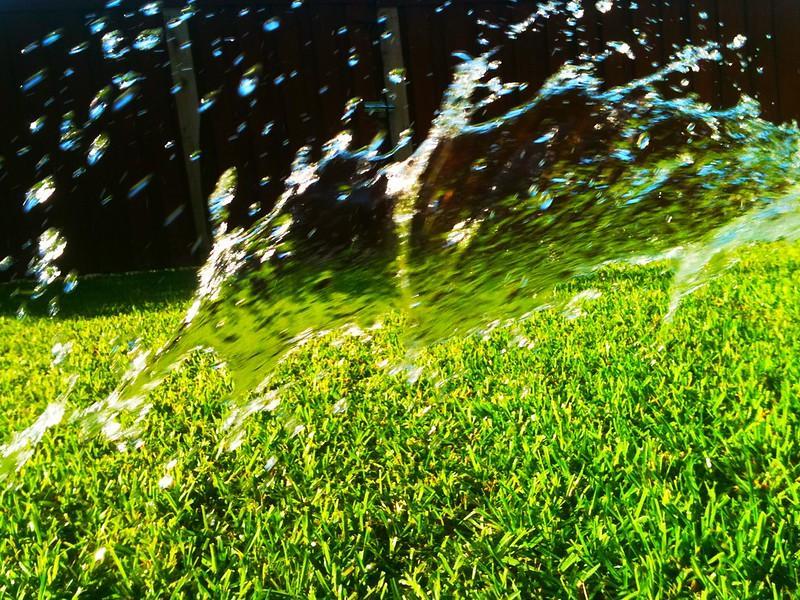
Most lawns need 1 to 1.5 inches of water per week from rain or watering.
Like all life on earth, grass needs water. However, you need to give your grass the right amount of water. Providing too little or too much water can cause many problems. For example, if you underwater the grass, the grass will simply stop growing.
However, overwatering is not any less harmful. It will cause your lawn to become wet, like a swamp. Moreover, it suffocates your grass and also stunts root growth. And if that is not enough, overwatering can create ideal pest and fungal growth conditions.
So, please ensure that you water your grass regularly but do not overwater.
Final Thoughts
With these tips and some effort, you can revive your thin lawn and produce a lush, green, thick, dense carpet-like backyard that will turn the head of everyone who passes by your home. However, there is no rest for you yet. You must work hard and maintain this routine if you want your lawn to stay in the same pristine condition.
Frequently Asked Questions (FAQs)
How can I make grass grow thicker and faster?
One of the most effective ways to get your grass to grow fast is to fertilize it right after you plant it. However, be sure not to over-fertilize. Adding too much fertilizer can burn the grass, cause the growth of weeds and lead to nutrient run-off and leaching.
What is the best fertilizer to thicken grass?
The best fertilizer to thicken grass is usually the one that contains the most phosphorus. Phosphorus is an essential nutrient that all plants need to grow and survive. However, depending on the soil test of your lawn, you might need some other fertilizer.
What fertilizer makes grass dark green?
The number one way to increase the green color of your lawn is with a high-nitrogen fertilizer. Nitrogen promotes healthy leaf growth by encouraging the production of chlorophyll, which gives the grass its deep green color and helps it produce its food.
Sources for Further Reading
How to grow and maintain a healthy lawn. (Oregon State University Extension Service. 2022). Retrieved 15 February 2023, from https://extension.oregonstate.edu/gardening/lawn/how-grow-maintain-healthy-lawn
How to keep your lawn green and healthy. The University of Alberta. (2023). Retrieved 15 February 2023, from https://www.ualberta.ca/folio/2019/04/how-to-keep-your-lawn-green-and-healthy.html
Tips for a Thick, Weed-Free Lawn | Weed Science Society of America. (2023). Retrieved 15 February 2023, from https://wssa.net/wssa/weed/articles/tips-for-a-thick-weed-free-lawn/
Do you have other tips on how to make grass thicker and fuller? Comment below and let us know. Also, check out our other articles:
Buffalo Grass 101: Is It Any Good & How Can You Grow It In Your Yard?
What Is The Best Time To Plant St. Augustine Grass? The Ultimate Guide
How To Fix A Patchy Lawn? Steps, Tips & Tools Needed | A Comprehensive Guide







